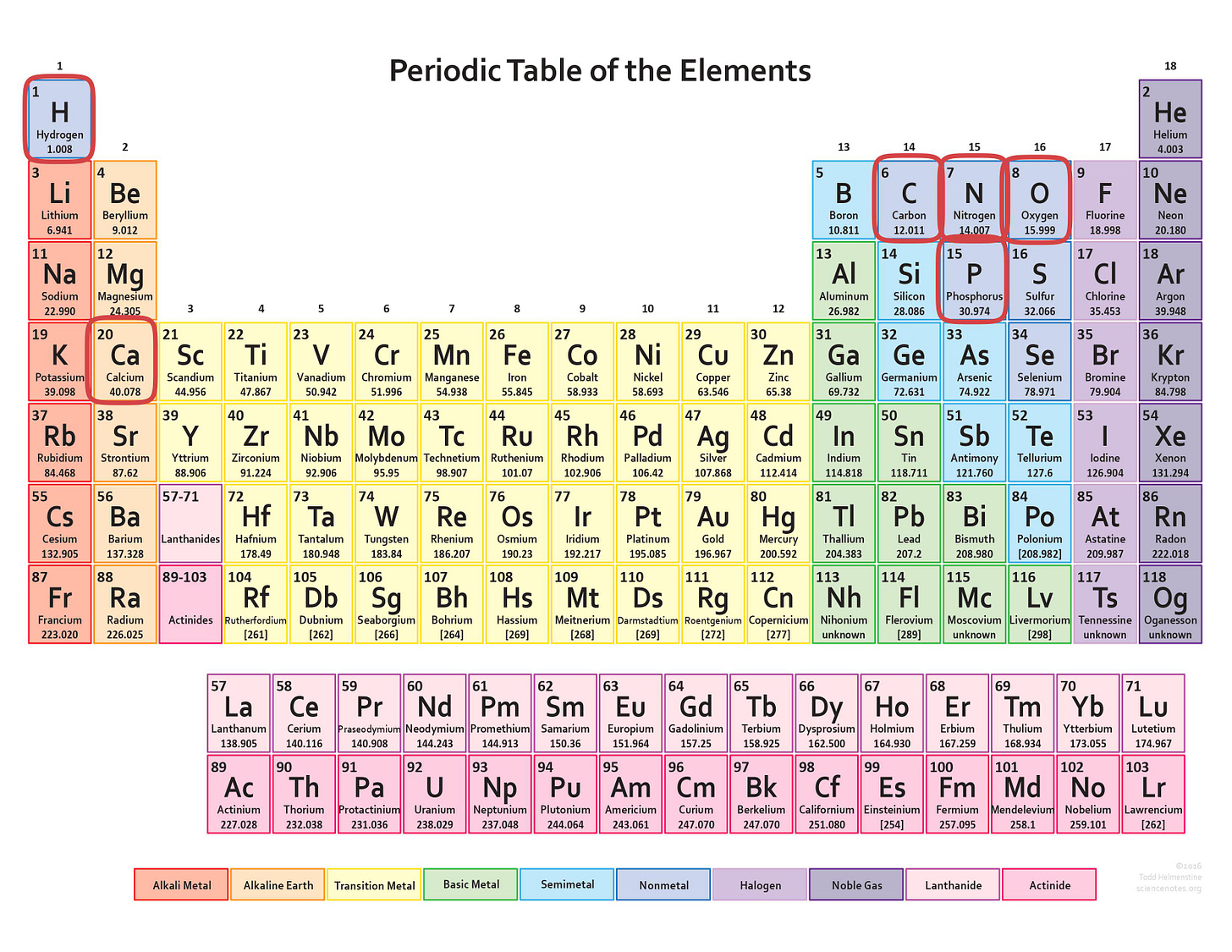Let’s calculate the commodity value of our bodies!
In your raw, elemental form, how much would you estimate your meat bag is worth?
First, we break ourselves down down into elemental parts.
Remarkably, six elements make up 99% of the body's elemental mass.
Oxygen (O): About 65% of the human body's mass. Oxygen is a key element in the molecular structure of water, which makes up a significant portion of the human body. It's also essential in the process of cellular respiration.
Carbon (C): Approximately 18% of the body's mass. Carbon is the backbone of all organic molecules, including proteins, lipids, nucleic acids (DNA and RNA), and carbohydrates.
Hydrogen (H): Around 10% of the body's mass. Hydrogen is found in water and in all organic molecules.
Nitrogen (N): About 3% of the body's mass. Nitrogen is a crucial component of amino acids, which make up proteins, and nucleic acids, which make up DNA and RNA.
Calcium (Ca): Around 1.5% of the body's mass. Calcium is essential for bone and teeth structure and is important in cell signaling, blood clotting, and muscle contraction.
Phosphorus (P): About 1% of the body's mass. Phosphorus is a part of DNA and RNA and is also found in ATP, the molecule used for energy storage in cells. It's also a component of bones and teeth.
The last 1% of elemental human matter includes electrolytes like potassium (K), sulfur (S), sodium (Na), chlorine (Cl) and magnesium (Mg).
The metal iron (Fe) is required for hemoglobin to transport oxygen (O) in the blood.
Additional trace elements include zinc (Zn), copper (Cu), selenium (se), fluorine (F), iodine (I), manganese (Mn) and cobalt (Co), all of which are required for various enzymatic and physiological functions.
We’ll set aside that last 1% for simplicity sake.
If we multiply the composition percentage of each element by an average 80kg body weight, we get the representative elemental mass in kilograms.
Next, multiplying each mass by the market rate per kilogram gets us to the market value for each element.
Turns out you’re worth about $26 on the open market - about the cost of a toaster.


